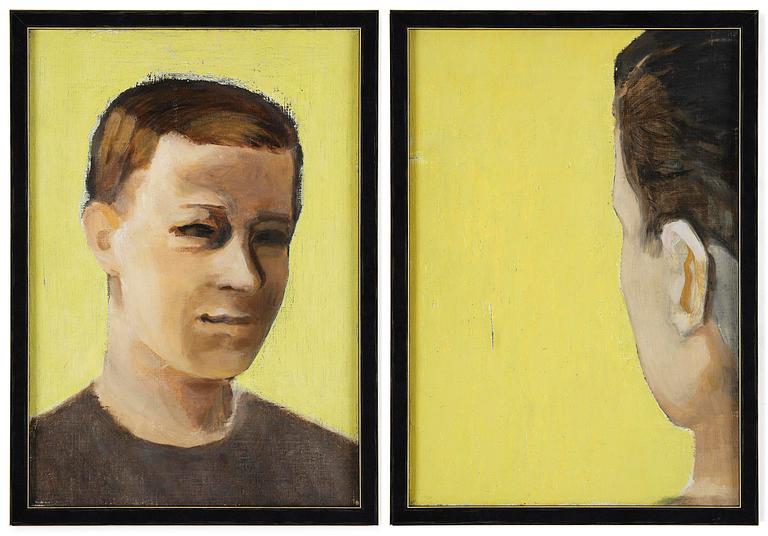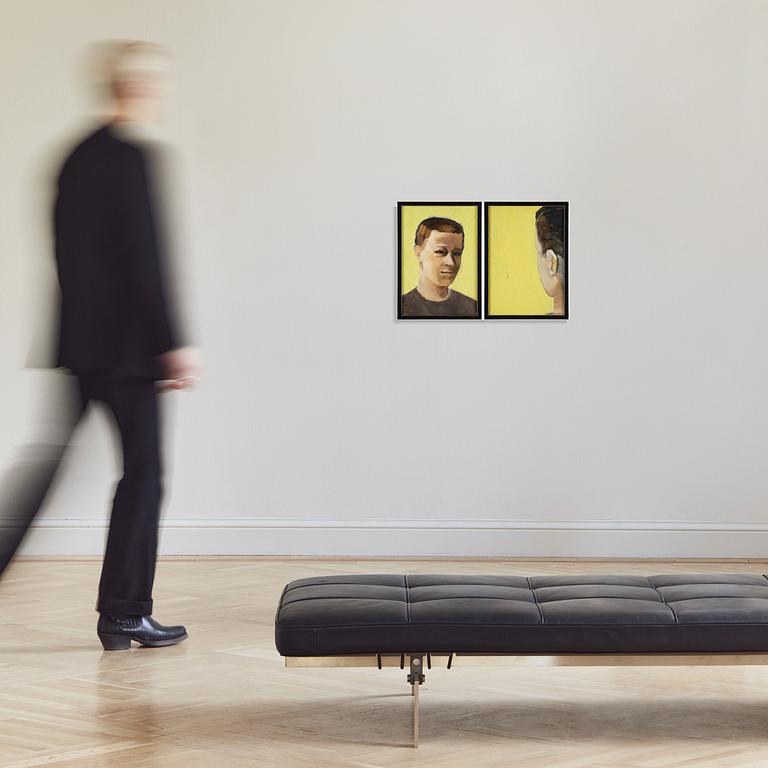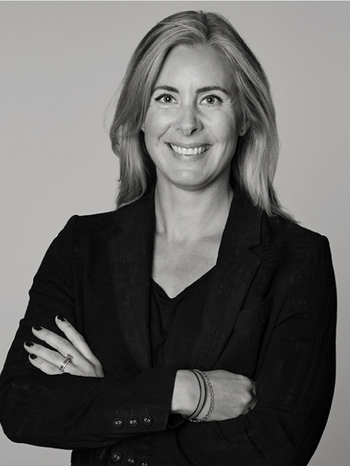Cecilia Edefalk
Untitled
Signed C. Edefalk and dated 88 verso. Diptych. Canvas 50 x 35 cm each.
Provenance
Galleri Thomas Wallner, Malmö 1988.
Karl-Erik Johansson Collection, Sweden.
Exhibitions
Gallery Thomas Wallner, Malmö, 1988 - the artist's debut exhibition.
Literature
Karl-Erik Johansson, "Samla sitt liv, Konstälskarens bilderbok", 2010, illustrated fullpage p. 261.
More information
The double portrait was first shown in 1988 at Cecilia Edefalk's debut exhibition at Galleri Thomas Wallner in Malmö. The exhibition was widely appreciated and reviewed, and all the works sold before the opening. The auction's portrait is a diptych depicting a person gazing at his reflection in a mirror. It is a realistic representation, painted in warm tones against a buttery yellow background. Sunlight streams in from the left, guiding the viewer's gaze to the partially turned face in the right panel. What is it that we see? Is there one individual in the image, or are there two?
The author and art critic Carl-Johan Malmberg aptly wrote in connection to the artist's exhibition at the Nationalmuseum in 2008: "Edefalk is a geneticist of images; it is as if she says that there is never just one image. Images come from images and are always pregnant with new images; they seed themselves, bud off, double themselves, and spread, not only in the viewer's consciousness but in the very physical space. A woman contains a man, every being contains another, and this other also includes images of oneself."
Edefalk's works often explore the act of seeing and the perception of reality. By consistently employing "an image of an image of an image..." she drains the image of its original meaning while simultaneously creating a new one. As she sometimes also divides the image into different surfaces that interact in an intricate manner, our perceptual ability is shattered like a broken mirror, prompting us to self-reflection.
What do we really see? Surfaces. But beneath these surfaces lie layers upon layers of meaning. We can lose ourselves in the painting's history of creation and note that there is not just one clear experience or interpretation of it, but several – depending on which image one chooses to start from.
With an almost hypnotic calm, Cecilia Edefalk leads us into a world where the images are never unambiguous – they are riddles to return to, again and again.


















































